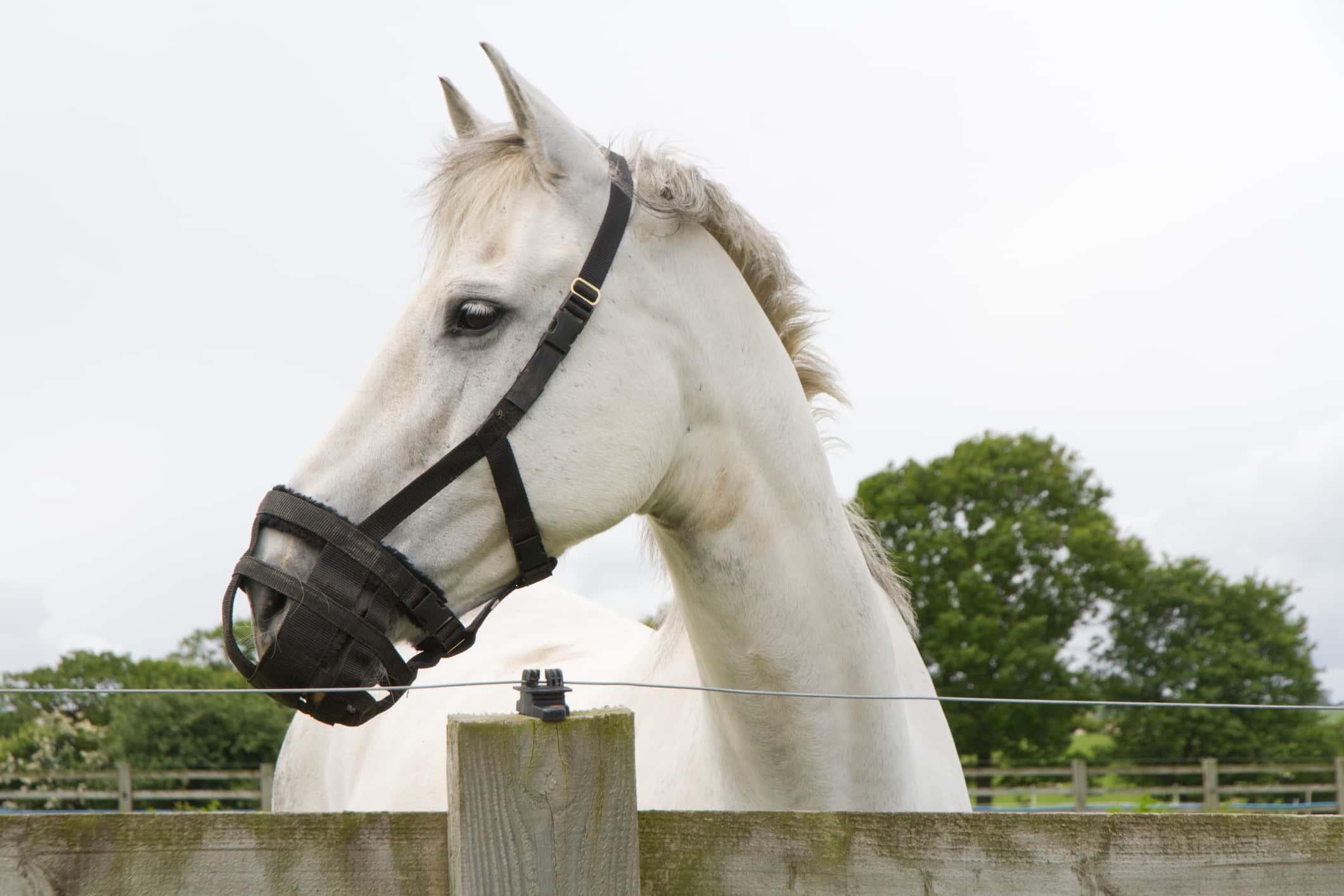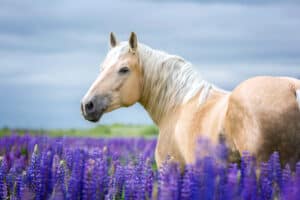Have you ever seen a horse standing or moving abnormally? It might have laminitis (also known as founder)! Laminitis is inflammation within a horse’s hoof tissue that leads to damage and lameness. This is a painful and often recurring condition. There are a few known reasons horses founder and just as many ways to prevent it. There are also recommended treatments since it’s so common among equines and other hooved animals. Let’s learn more about laminitis and what causes horses to founder so that you can protect your prized pet from this fate.
What Is Laminitis?
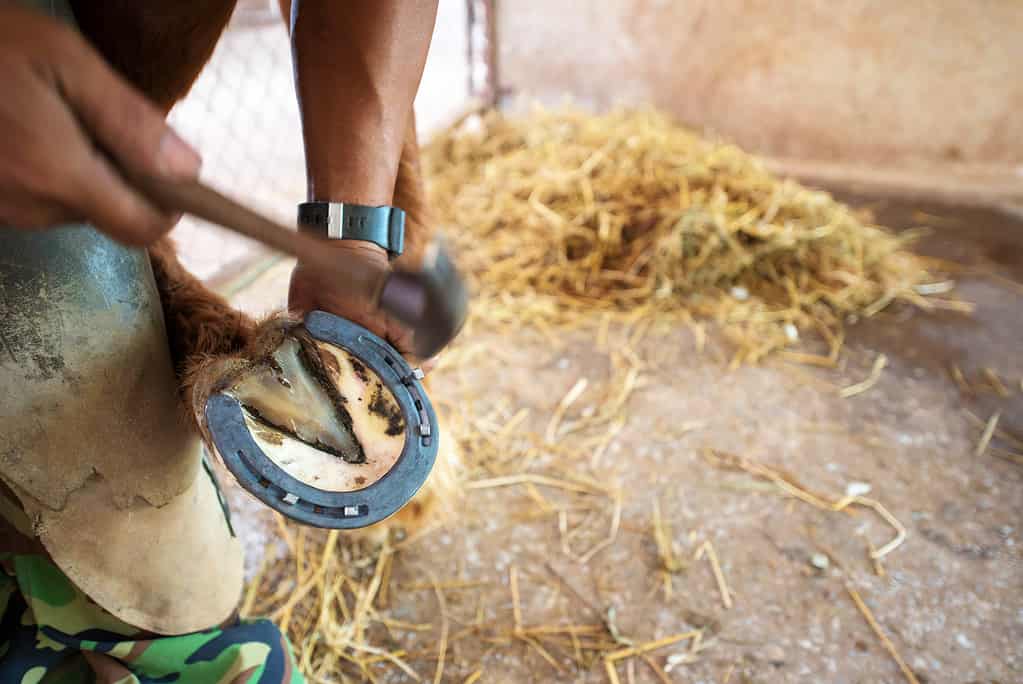
Horses founder for many reasons, all of which are preventable.
©10174593_258/ via Getty Images
Laminitis is inflammation of the laminar structures of the hoof, which leads to severe soreness or lameness. When horses founder, the tissue (lamella) between their coffin bone weakens and can eventually separate from their hoof. This is incredibly painful, but it’s also preventable.
Researchers and veterinarians know why horses founder, but it’s still a somewhat mysterious condition. With that in mind, let’s go over the obstacles to overcome if you want to keep your horse sound.
The 3 Causes of Laminitis
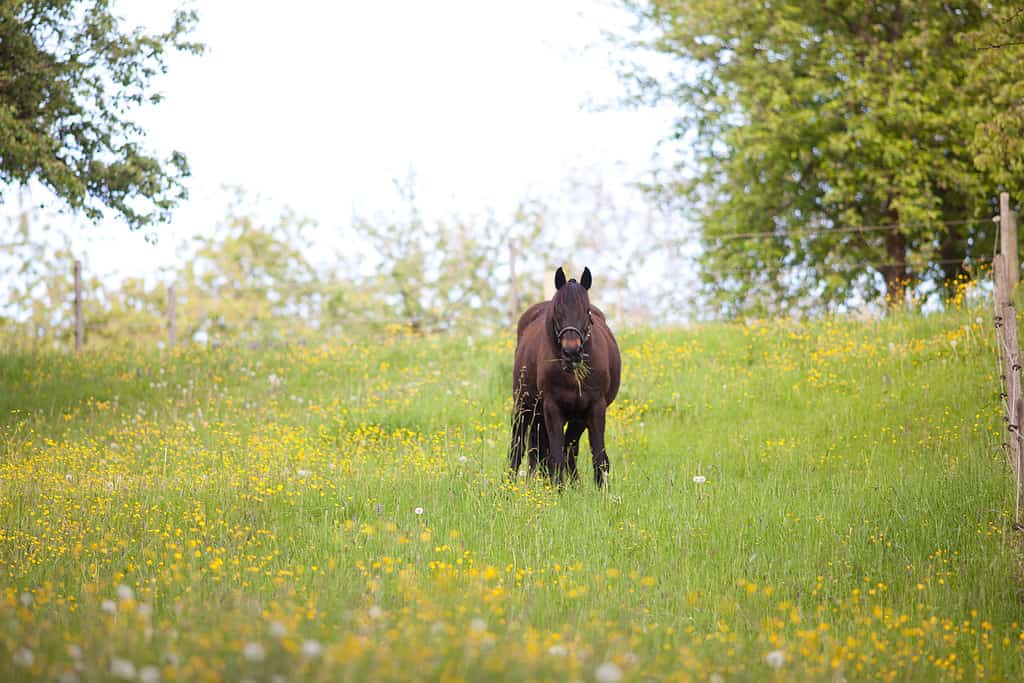
Too much lush grass isn’t healthy for your equine friend! It causes this incredibly painful condition that affects their hooves.
©anjajuli/iStock via Getty Images
There are three main reasons that your horse founders: overload, inflammation, or metabolic causes. It’s important to note that there are other outcomes as well, but these are the most common.
1. Overload
Overload refers to when a horse compensates for an injury by bearing more weight on the opposite leg. Over time, this leads to inflammation and damage of the overloaded hoof as it supports the weight of this 1,000-pound animal. American racehorse Barbaro is a famous example of what this condition can do to even the fittest of equines.
2. Inflammation
Horses founder more commonly in the spring. Why? Because changes to a horse’s diet can cause issues for both their hooves (laminitis) and digestive systems (colic). For instance, sudden pasture turnout after a winter with limited access isn’t such a good thing for horses.
If they graze too much on the lush grass growing, which is high in sugar, it can cause inflammation and break down the structure of their hooves. The same thing can happen with excess grain consumption. This is the most common reason why horses develop laminitis.
3. Metabolic Causes
The other main reason horses founder is due to diseases like pituitary pars intermedia dysfunction (PPID or equine Cushing’s) and equine metabolic syndrome (EMS). These conditions disrupt insulin function, resulting in founder.
Laminitis is more common in older horses, ponies, draft breeds, and Morgans. However, every equine is susceptible to it.
Signs of Founder in Horses

Suspect your horse is foundering? Time to call your vet! They can properly diagnose and treat the condition.
©AsyaPozniak/iStock via Getty Images
Acute episodes of founder are often mistaken for sole bruising, arthritis, or foot soreness after a farrier visit. That’s why it’s good to know the symptoms of laminitis so you can look out for them. Catching it early leads to much better outcomes.
Some warning signs that signal your horse might have laminitis include:
- Slight discomfort or lameness
- A pained expression
- Reluctance to stand
- Constant weight shifting
- Increased digital pulse
- Excessive heat in their hooves
- High heart and respiratory rate
These are the acute symptoms of founder to watch out for that, if spotted early, can prevent chronic, untreatable laminitis.
Treatment for Founder in Horses
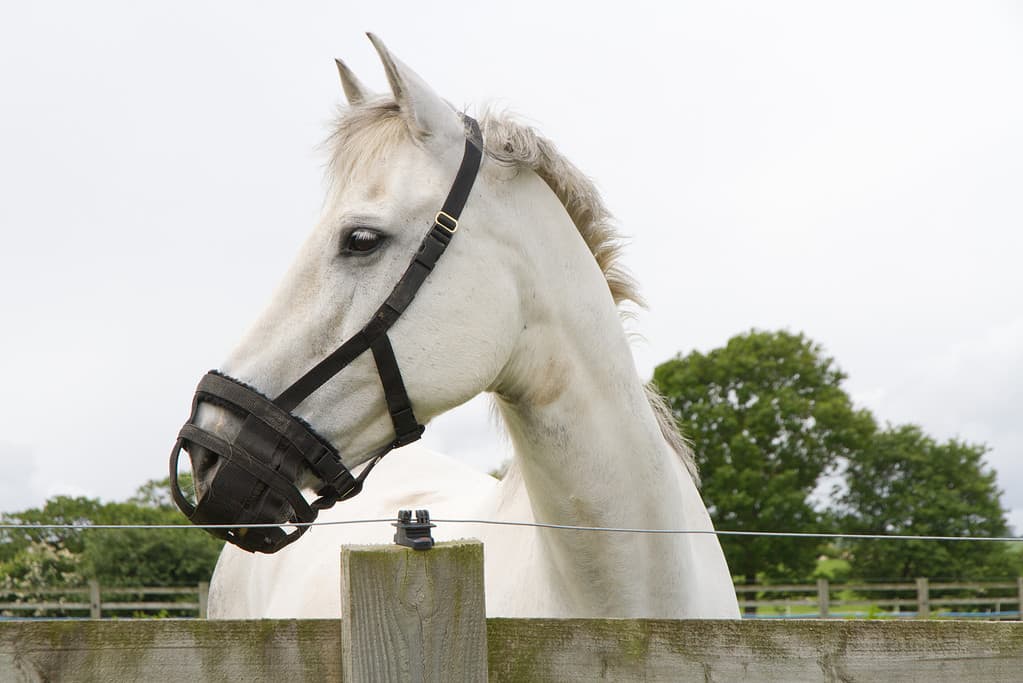
You can control your horse’s grass intake with a grazing muzzle. They can still eat, but it takes longer and requires more effort.
©peplow/iStock via Getty Images
The remedy for your horse’s founder depends on the type of laminitis they are experiencing and whether it’s acute or chronic.
Treatment options might include:
- Immediate medical intervention to treat the underlying cause
- Different forms of therapy (pain, cryo, anti-inflammatory)
- Constant monitoring
- Concentrated hoof after-care
- Preventative measures (muzzles, less pasture access, etc.)
Always refer to your vet for proper diagnosis and recommended treatment plans.
FAQs
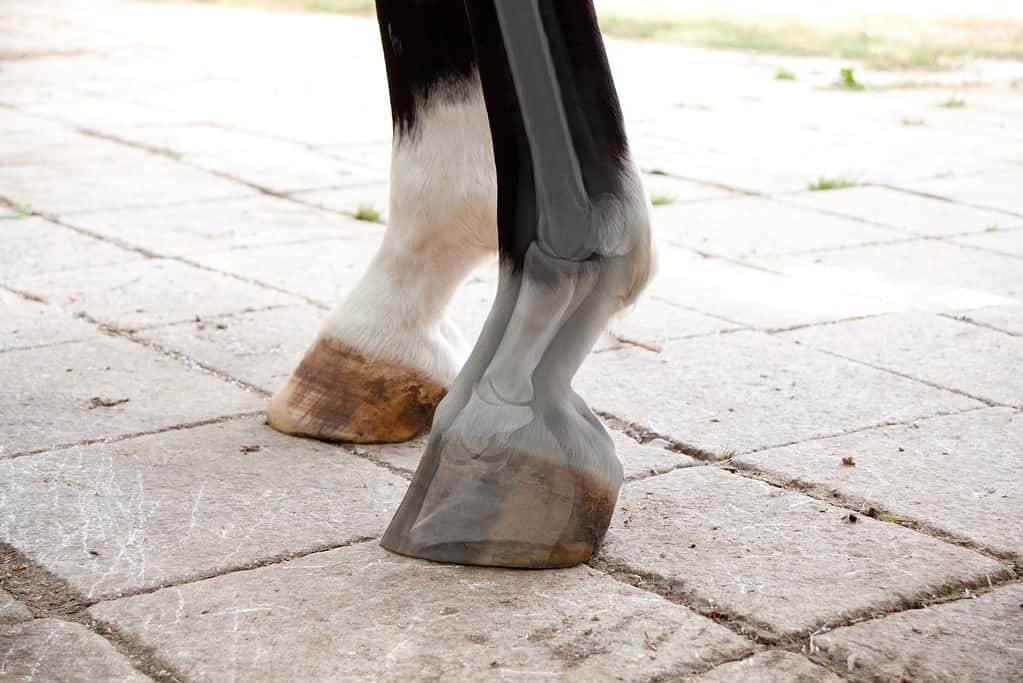
This condition affects the hooves, causing lameness and pain.
©anjajuli/iStock via Getty Images
How Do I Stop My Horses From Founding?
Do your research! According to Alisha Jackson, owner and barn manager of Blue Mountain Pet Care in Virginia, “Founder can be prevented by regulating a horse’s grass intake either by using a muzzle, reducing turnout time, and by monitoring them for symptoms of laminitis (especially in the spring when grass sugar levels are at an all-time high).”
Can You Reverse Founder in Horses?
It is possible for horses to recover from founder, but there is no cure for the disease once it reaches a chronic state. You will need to take special care of them for the rest of their lives to manage pain and other obstacles if this happens.
Thank you for reading! Have some feedback for us? Contact the AZ Animals editorial team.

